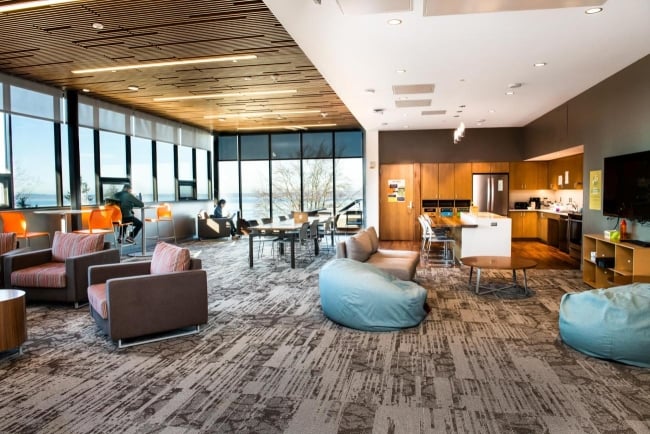You have /5 articles left.
Sign up for a free account or log in.

The Multicultural Center at Western Washington University is home to Multicultural Student Services and offers academic advising appointments to student throughout the term through an embedded service model.
Western Washington University
One of the challenges higher education practitioners face in their work is getting students plugged in to appropriate offices that promote academic and student success. For some students, it can be nerve-wracking to advocate for their needs or overwhelming to find where to go for help, particularly for first-generation or historically minoritized student populations.
A more recent trend among faculty members is hosting office hours outside of their physical office, making the experience less daunting for an anxious student, as well as making the faculty more visible and approachable on campus.
To reach historically disadvantaged students, including first-generation and racial or ethnic minorities on campus, staff members can work within diversity, equity and inclusion (DEI) offices, building trust with underrepresented minority students and making services more accessible.
DEI Offices Under Attack
Some states, including Utah, Florida, Oklahoma and Texas, have enacted policies blocking funding for or dismantling offices focused on diversity, equity and inclusion at public institutions.
While some offices continue to operate under different names, others have dissolved entirely.
What’s the need: DEI offices serve a variety of opportunities to engage with underrepresented or historically minoritized students within a college or university.
First-generation students, for example, are less likely than their continuing-generation peers to utilize support services, which can stem from campus resources being “opt-in,” requiring students to stake a claim to receive them, according to researchers. For some, it can also be difficult to navigate the hidden curricula of academia and its unfamiliar terms and bureaucratic processes.
Students recognize the importance of spaces for cultural identity and affinity, with 55 percent of respondents to a 2023 NASPA survey identifying a campus multicultural center as an investment in campus racial climate work. These spaces, in addition to helping students feel as though they belong, can create a larger support system and infrastructure.
Place-based care: One of the most common services in the DEI offices is mental health support.
Since 2023, Centre College in Kentucky has had a special embedded counselor who works within the Office of Diversity and Inclusion. This counselor is a member of the Centre Counseling staff and provides all of the same services, “but they are strategically placed in an office that may feel more accessible to students,” explains Ann Goodwin, Centre’s associate dean for student well-being and director of counseling.
“We have high utilization rates, but also recognize that some students may feel uncomfortable coming to our office, which is connected to student health,” Goodwin adds.
There’s little difference between the services offered at the traditional office and the DEI office, but creating a confidential and private space is a priority when working in an embedded model, Goodwin says.
Similarly, Cornell University’s Let’s Talk initiative, which offers drop-in counseling sessions around campus, has designated community liaison positions, who provide service to specific sites for additional hours each week. The community liaison builds relationships with staff and provides specific educational programming for the space, says David Reetz, director of Counseling and Psychological Services at Cornell Health. Liaisons also help collect feedback and insight about how Cornell Health can better support students in the visited areas.
Health service providers aren’t the only staff moving out of their office and into students’ spaces. At Western Washington University, academic advisers work across campus—including in the Multicultural Student Services area, Disability Access Center and the Black Student Coalition—providing typical assistance such as course scheduling and degree mapping.
Does it work? It’s hard to isolate exactly who is benefiting from embedded services, because part of the goal is to refer students to the main office, adding them to the general flow of visitors.
At Centre College, data has shown the initiative (as well as other outreach strategies) correlated with an increase in students of color utilizing the counseling center, Goodwin says.
Staff remain focused on this work as outreach and building positive partnerships across departments and divisions.
“Those partnerships are critical for us because if those students can see us in their spaces and feel connected and supported, you know that that opens the doors more for them to come into our new center as well,” says Meagan Bryson, director of academic advising and student achievement.
If your student success program has a unique feature or twist, we’d like to know about it. Click here to submit.








